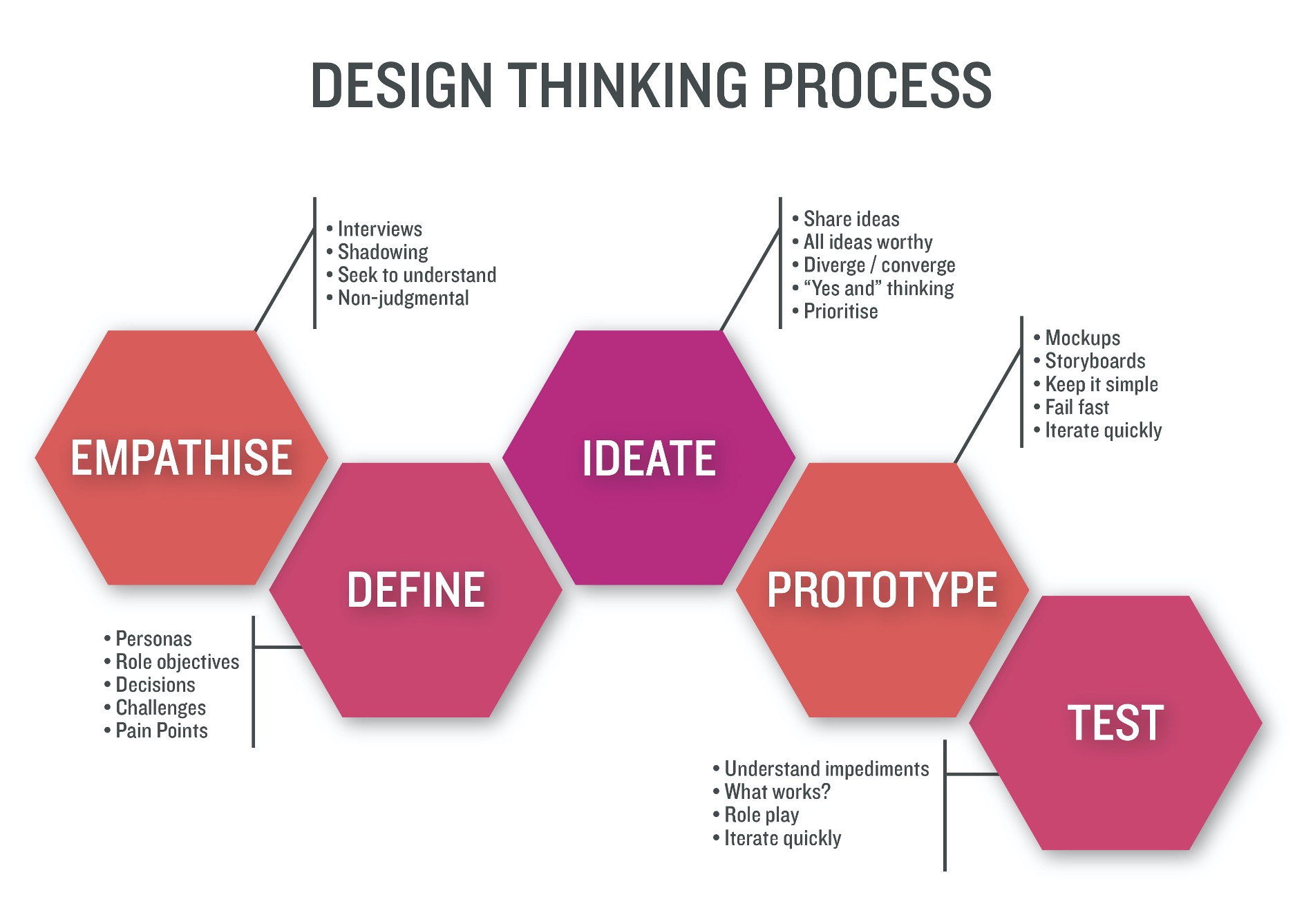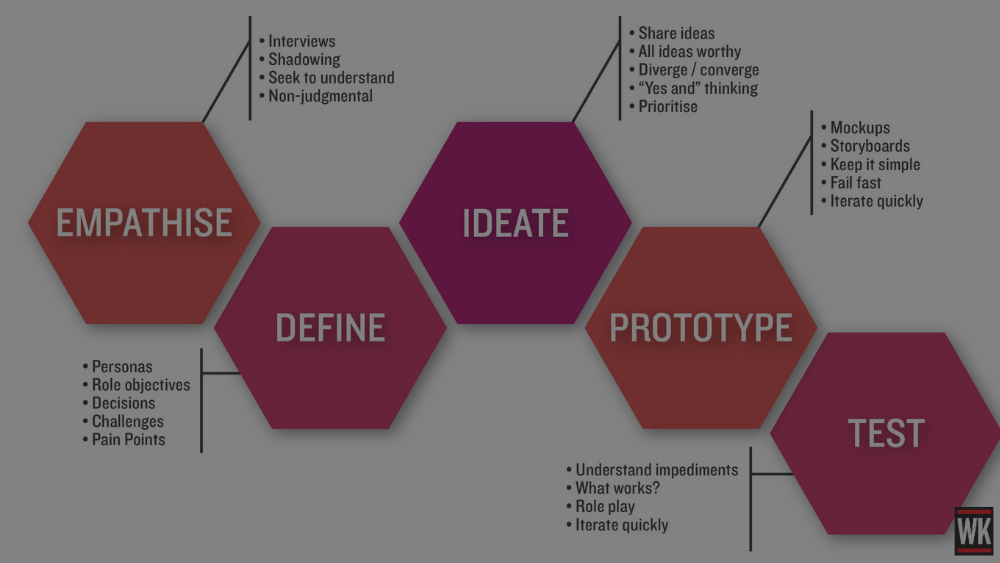As we moved from the 20th century into the 21st, a shift began in the way that we approached design concepts – largely in terms of product, software and digital applications. Developers began to pay more attention to understanding human goals and behaviours, in order to design products and services built around our needs.
For some reason, though, marketing took a while to catch up, but now we are seeing human-centred, Design Thinking marketing coming to the fore.
What does this mean for you as a digital leader?
As the digital economy explores, modern marketing now requires a ‘design thinking’ approach, and an important element to this is human-centric. We now have to think more carefully about how we design the digital interactions surrounding marketing content.
New technologies are driving rapid shifts in how people buy, and our understanding of customer behaviour is constantly shifting and evolving.
This means we are constantly having to review our business models and marketing strategies in order to keep up with the modern buyer.
One of the ways digital leaders can do this is by applying Design Thinking, not just to how you innovate in terms of developing products but also in terms of your digital marketing.
What is Design Thinking?
Design Thinking is a model focused on creating solutions centred on meeting people’s needs, beginning with understanding their goals, behaviours and point of view.
Our customers are becoming ever more demanding in terms of communication, service and brand satisfaction, and Design Thinking helps you to work out what are the right messages, and how best to engage your community with your brand.
It can help you to:
- create personalised actions and strategies
- produce original and increasingly relevant content
- enhance your brand in the eyes of your customers, increasing levels of engagement
- drive efficiency in your internal processes for creating marketing campaigns
- encourage creativity across your teams
- increase productivity
It’s important to remember, though, that Design Thinking is not purely for you as a digital leader, or for your management or marketing team. You need to drive it across your whole organisation, drawing insights and innovative ideas not only from marketing and sales but also from finance, engineering, R&D, or any other teams.
Understanding the Human-Centred Approach to Design Thinking
As the term suggests, at the core of a human-centred approach is an understanding of people’s needs, goals, behaviours and personality – and how they interact with us as a business.
When we’re thinking about marketing, we therefore need to consider how we approach designing content and digital interaction experiences to meet those needs.
As businesses grow and the people who work in them become more distant from their customers, there is a risk they can start to lose focus on them. Their focus may become more internalised, based on budgets, sales targets, timelines or managerial influence. Human-centred design is growing in influence because it provides an approach to problem solving – whether through product or service design or marketing campaigns that focuses on the customer and brings their needs to front and centre.
The job of human-centred design is to understand peoples’ lives and needs and to design solutions to their needs and remove their pain points.
5 steps to creating human-centred Design Thinking digital marketing

-
Empathise
Empathy requires that you understand and relate emotionally to your customer’s feelings and way of thinking.
This begins with research. Who are they? What do they really want? Why do they want it? What do they think and what’s their thought process?
You need to approach this part of the process with a completely open mind, and be prepared to forget what you think or believe (or want to believe) your customers want and listen to them.
What is their pain point? Price, service, accessibility, convenience? Empathy will help you to craft the right marketing messages, sure of hitting your target audience’s most pressing need.
In today’s digital world, you must need to be able to provide an amazing and relevant experience based on research gathered from your actual customers and from members of your team who interact with customers at one point in their buying journey.
You might have a great CRM stocked with AI-generated data, and think you know everything about your clients. But developing true empathy requires you to listen in detail, to enable you to identify problems and find creative solutions.
So you’ll need extensive qualitative and quantitative data about your target audience. Your Sales and Customer Service teams should be gathering data around their online experience and behaviours, and you can also conduct interviews and surveys to help you understand how your customers interact with your brand at every level and every stage of their buying process – through your website, social media platforms, and direct marketing.
You can also use this research to understand how the experience compares with that of your competitors.
-
Define
With all the information collected, you now need to analyse it to define and describe a problem from the user’s point of view. What do they need, and why? How is their problem not being solved, either by you, or elsewhere? How could you solve it better?
You can use this step either to create a new product, improve an existing one or design marketing campaigns that meet a specific customer need or solve a common frustration.
Taking a human-centred Design Thinking approach means that you need to turn around the way you define problems. So instead of setting the problem as a business goal (e.g. increase sales by x%) you need to write it from an empathetic, customer-focussed point of view (e.g. help entrepreneurs to develop more effective digital marketing campaigns).
Taking a human-centred point of view will help you to define more relevant, clear and effective marketing messages. The research you did into understanding why your customers buy your product or service gives you the opportunity to connect with them emotionally.
-
Ideate
This is where brainstorming comes in. It’s important to involve your whole team, and encourage and accept all ideas at this stage. Sometimes, it’s the more seemingly ‘off the wall’ ideas that can lead to the innovative solutions that put you ahead of the game.
Then, with your team, evaluate all the ideas and choose the ones that are worth taking to the next phase.
These ideas will serve to define the shape of your Design Thinking digital marketing; the channels and content that you will use.
-
Prototype
You now need to move quickly to getting feedback about your creative ideas. So next, you need to produce something that allows you to show the target audience the proposed solution quickly and without great cost, before investing in creating something costly or time-consuming.
Get your ideas into a prototype, a minimum viable product or campaign that you can first test internally, getting feedback from your team, and then with your customers.
This will help you to understand what works and what doesn’t, and because it’s a low-cost version, you can develop multiple versions, improving the experience every time, refining your ideas until you arrive at a solution that truly meets your customers’ needs.
From landing pages to email marketing, sales pitches or printed ad campaigns, you can prototype your marketing materials, develop alternative versions and gain insights quickly.
-
Test
Once you have your prototype ready, it’s time to test it on a sample of your customer base for feedback. While the prototype stage allowed you to start the process, testing your solution in the real world is the important part.
Bring all your digital marketing tools into play to do A/B testing of your campaigns, carry out surveys in social networks and conduct focus groups to identify what works, and what needs to be changed.
Testing shows if you have really solved the problem you defined in Step 2. For that to have happened, you need to be able to see a definite, measurable difference in how your customers behave, or the level of satisfaction they report.
If your solution doesn’t work, you must be willing to go back to the drawing board. That may mean redefining the solution, or it may mean returning to the problem, to be sure that you have properly understood your customers’ pain points and needs.
The most important thing to remember is that this Design Thinking process isn’t something you do once, and then keep repeating the outcome. Marketing teams, although often creative and innovative, can have a tendency to fall back on their tried and tested strategies, content calendars and so on.
In the fast-moving digital world we live in today, though, you’ll need to be prepared to drive this process on an almost continuous basis, cycling through the five stages rapidly, in order to keep up with rapidly evolving customer needs.

